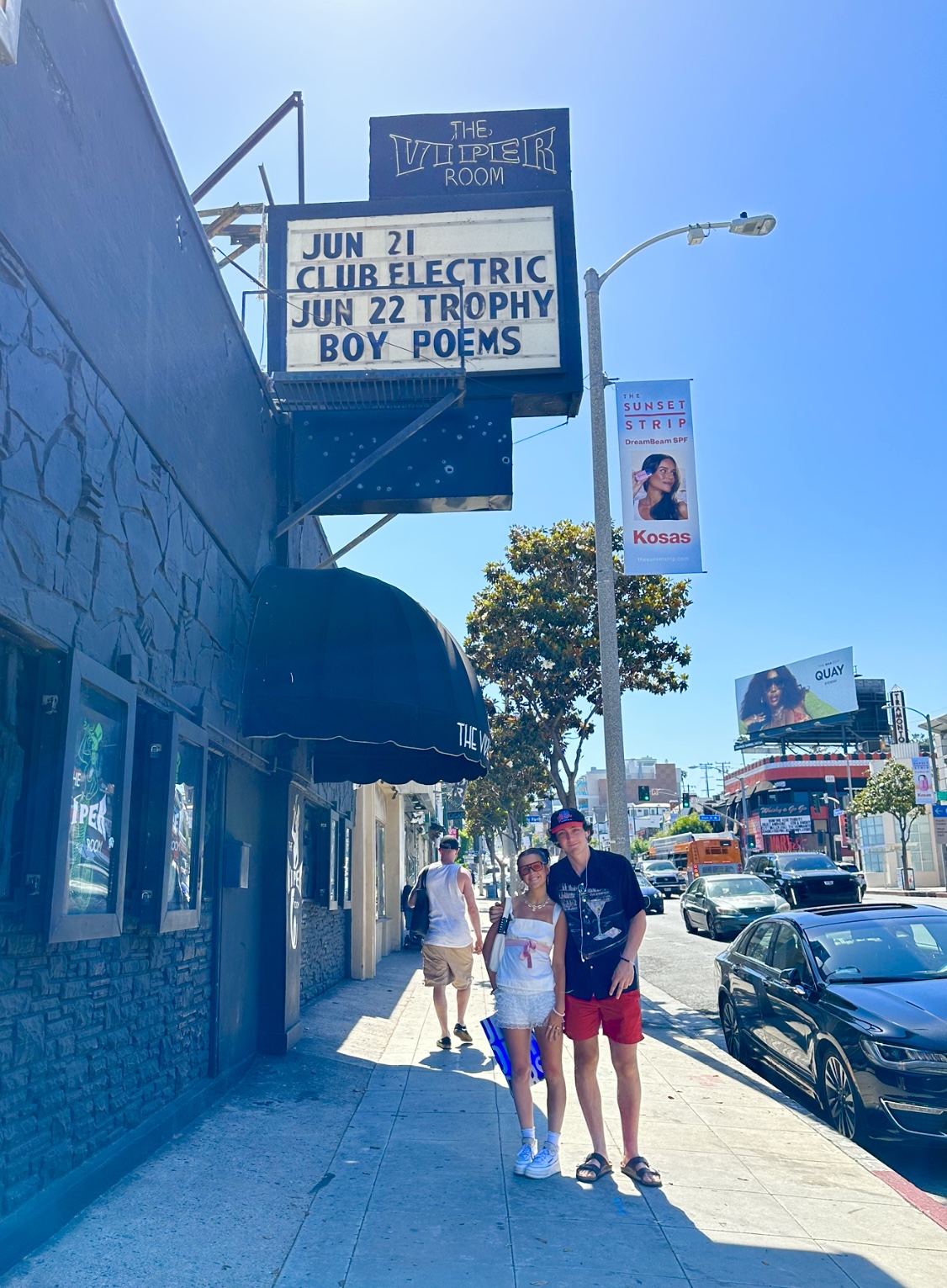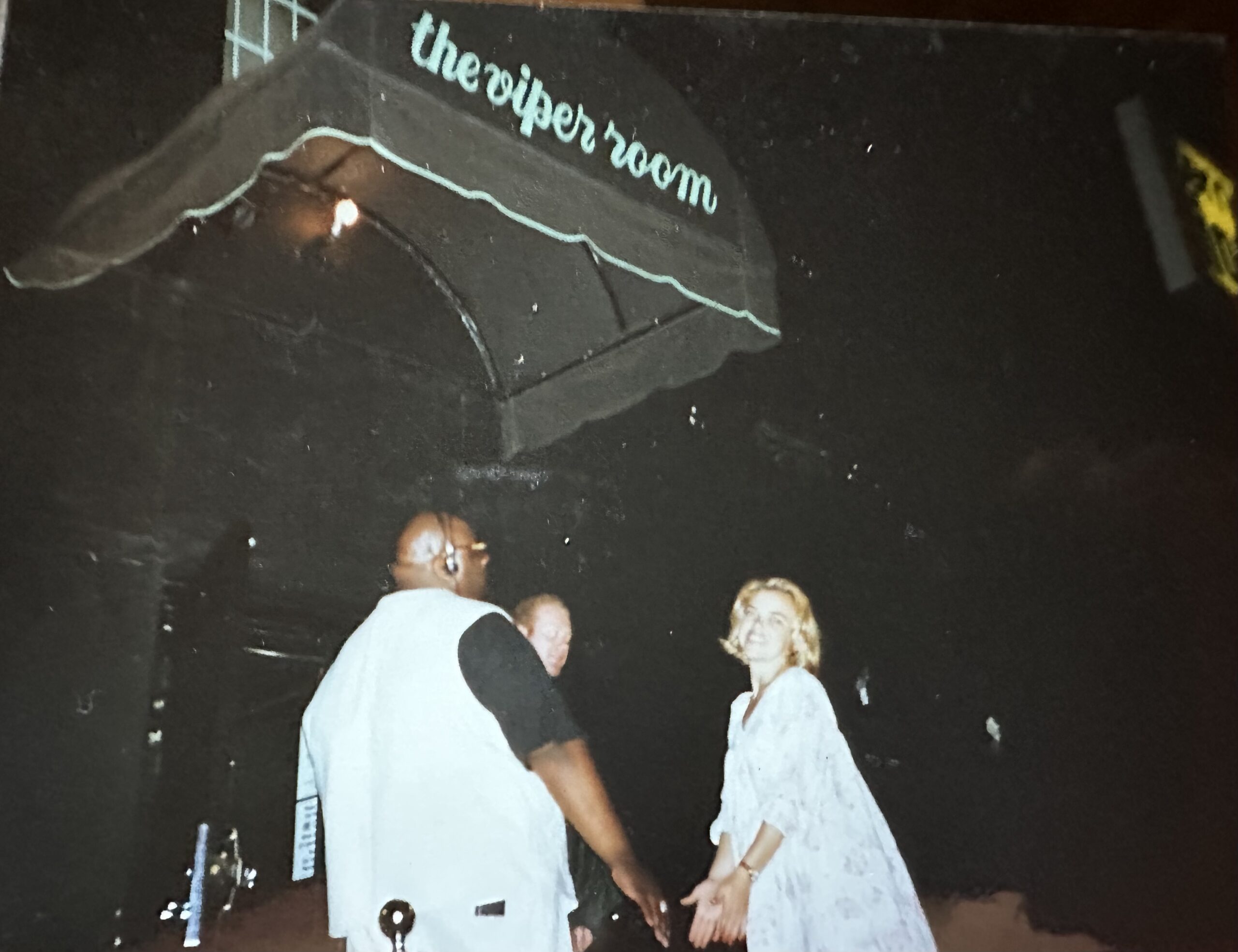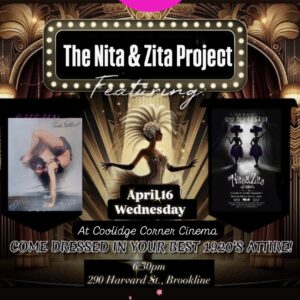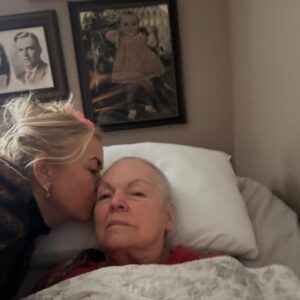When I returned to 8852 Sunset to show my children this summer, the logo on the side of the building seemed to rustle and quiver with aching memories, and I longed to tell them but what could I say? What could I tell them of sweaty nights and thumping bodies and poetry written by young boys smoking cigarettes and wearing fedoras who carried notebooks and tore off a page to hand to me as I walked out of the club, of girls in matching kimonos with dragons on the back falling in love with music with dance with each other with everyone else, with that hunger for secret worlds rising off all of them them like the smell of jasmine rising off the overgrown vines covering a hidden doorway off Sunset.
When I touched the locked doorknob of the hidden doorway, I closed my eyes and listened to the ghosts, just out of my reach but still having a hell of time with laughter and clinking glasses and stumbling through the streets afterward… I touched the doorknob and remembered.
I first discovered the Viper Room in 1989 when it was a dingy red club on Sunset Blvd called The Central. It was a Monday night and there was only one thing going on in this sleepy little town called Los Angeles–it was a band called Chuck E. Weiss and the Goddamn Liars. I had never heard of them, but I didn’t care. I wanted to be swept up in live music and dance until my head whips launched sweat through the air.
With a $5 cover charge, I was in. I hopped into my VW bug and put-putted all the way up to Sunset, parking under a billboard with a rugged cowboy on a horse promising that if I smoked Marlboros, I too could be a hot cowboy on a wild horse gallivanting around the mountains. But I didn’t want the mountains–I wanted a nightclub in a city that smelled like a thousand secret worlds, with music that opened portals to a swamp shack in 1930’s Louisiana.
I entered The Central, an unassuming red building, what some might call a “dive-type bar, not Bukowski level dive, but maybe Mickey Rourke-level dive. Inside, the excitement was palpable and the bar so packed people had to carry drinks over their heads to walk from one side to the other. That night, my love affair with 8852 West Sunset boulevard began when the lights dimmed and the sound of a saxophone sliced through the crowd like a hot knife through butter. I saw the crowd part and a wild-haired sunglass-wearing sax player slowly walked by. It took me a moment to notice there was a person walking in front him. A wild-haired, sunglass-wearing, Chuck E. Weiss, bent over, snapping his fingers, a cigarette dangling from his lips. They slowly made their way through the crowd and onto the stage where the band waited and portals to that thousands secret worlds opened up with their first notes.
This is where I spent the next 103 Mondays. For two years, this was my place. I swooped in right before the music started, danced my heart out, and swooped out when the last note ended. After a year, I finally met the man himself while standing near the bar one night. We became friends and when I missed a Monday and he learned it was because I didn’t have the cover charge, he put me on the permanent guest list forever so I never had to pay again.
It was a while later that Chuck told me that he and his friend Johnny were renovating The Central and turning it into their 1930’s-style-dream club. He had introduced me to Johnny one night on Fairfax outside of Canters. They had decided to call it The Viper Room and wanted it to feel like you were stepping back in time.
In the 1930’s, a Viper was a kind of code word for musicians who smoked reefer, at the time very illegal. When I drank too much wine and there was a microphone, my go-to song was The Viper Song, a song I learned about when Chuck E. recommended a book to me called Really the Blues, a book telling the story of Mezz Mezzrow, a jazz musician from Harlem who was so well-known for his reefer that he even had some named after him. In the Viper Song, there are lyrics that say “I dreamed about a reefer five feet long, the Mighty Mezz…” named after Mezz. Mezz was also a Jewish clarinetist and saxophone player, and Chuck E. had told me about the book because my acting teacher at the time, Jeff Goldblum, was playing the part of a jazz clarinetist and was looking for research. Cab Calloway, Louis Armstrong, and Django Reinhardt all wrote songs about being a Viper. Johnny and Chuck E. decided to paint the club black and the logo green, the logo being a half glamourgirl/half snake sitting on a pair of dice while wearing a top hat and smoking. There was a big Havana moon painted on the backdrop for the stage, and on every matchbox was the word “WHAT?” written, a tagline belonging to Chuck E. who would randomly shout “What?” when people were talking, especially serious business people, because he loved pranks, telling tall tales, and basically creating entire worlds every time he opened his mouth.
The golden time at the Viper came to an end with the tragic overdose of a popular actor on the sidewalk out front. The club was flooded with vultures and “suits” and Chuck E. stopped playing on Monday nights after more than a decade.
The club carried on without him, though losing much of its stardust, and Chuck E. played at different places around the city.
One Thursday in 1997, Lady Jane, the New Orleans Oyster Girl came to town and called me to perform that night. She wanted an acrobatic contortionist act like the one Kim and I performed for the circus, one inspired by Nita & Zita whom I had learned about on an earlier visit to New Orleans. We threw together two choreographies to Little Egypt and Big Spender in our living room that afternoon and when we arrived at The Viper that night, our dressing room was the old “VIP room” with the one-way mirror. Kim and I stood in front of the mirror in our matching satin kimonos with the dragons on the back, putting on lashes while Lady Jane showed us a manila folder with photographs of Nita & Zita performing their tricks. For the next two years, we spent every Thursday night at The Viper Room performing with Lady Jane’s group. It was an old-school burlesque show with comedians, an MC, a live band, a rotating group of acts, though there were a few that performed every week–Kim and I as Honey & Vermillion, Lady Jane as the Oyster Girl, and our grand finale was always Catherine Delish who would arrive with her massive props like a giant bird cage she’d climb into and after dancing in her costume made of a thousand peacock feathers, or her enormous champagne glass which she would would dunk into for a bubble bath as bubbles filled the air and the nightclub was transported into a magical realm.
In 1999, Chuck E. returned to the Viper Room to play for his record release party. The album was called Extremely Cool and he had written a song for me called “Oh Marcy.” He wanted to surprise me with the song, which is why he never asked me how my name is spelled, and with the “Thank you” to me he had written in the liner notes of the album. It was on this fateful night that I met my now-ex-husband– who had produced the album. The husband turned out to be a dud, but the children oh the children… pure magic. The Viper Room means different things to different people. For me, it was, well, how do I say this?
Was it Thomas Wolfe who said “You can never go home again?” Maybe that’s true, but visiting the Viper Room this summer felt a lot like going home.





















